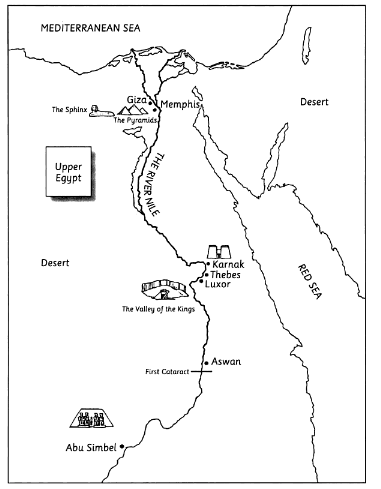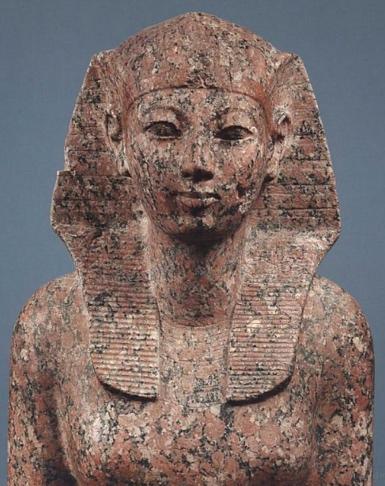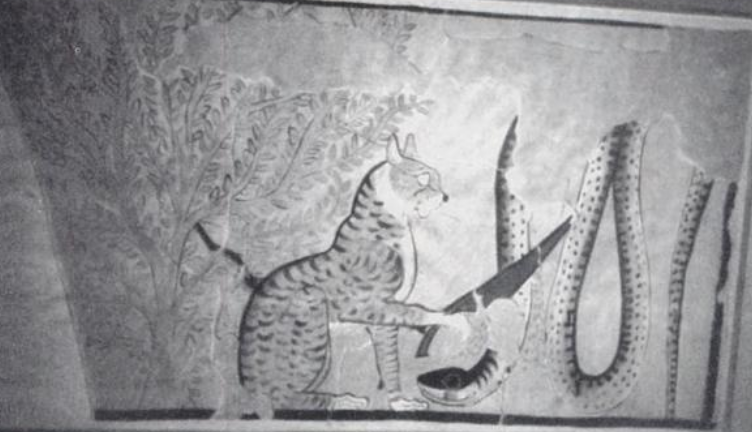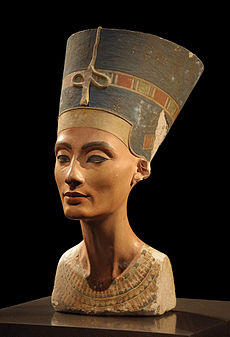Introduction
The history of Ancient Egyptian continues to attract the interest of modern historians in part because of the remarkable achievements made by this civilization. This paper is aimed at discussing various aspects of this culture in more detail. It should be noted the state was located in the northeast of Africa. The most important cities in the country were found near the Nile. For example, one can mention Memphis, Luxor, Thebes, or Giza (Green 12). The following map can best illustrate the geographic peculiarities of Ancient Egypt:

It should be taken into consideration the territory of this country was divided into two parts, namely the Lower Egypt located near the delta of the Nile and the Upper Egypt, which was located in the southern part of the Nile Valley (Massey 358). Yet, these separate entities were united approximately in 3000 before the Common Era (Massey 358). When speaking about the geography of this country, one should pay attention to such concepts as black and red lands (Massey 358). The term black land was used to describe the fertile loam, while the red land was a reference to the desert (Massey 358). On the whole, knowledge of geographic peculiarities is vital for understanding the economics and culture of Ancient Egypt.
Social structure and the position of women
The social structure of Ancient Egypt continues to be of great interest to researchers because this civilization had a very stratified society, and the interactions between people could be very complicated. This stratification was not typical of the countries that existed at that time. In many cases, the social structure of Ancient Egypt is always described as a pyramid (Casson 10). In particular, the pharaoh is supposed to be at the top of this structure. This person was regarded as the owner of almost all the end as well as the products of peasants’ labor (Casson 10). The rule of this individual had to be supported by the elite that included mostly priests and nobles. The nobility often occupied administrative positions (Casson 10). Secondly, one should remember about the middle-class. In particular, one should focus on the representatives of such occupations as merchants, soldiers, peasants, artisans, and people who governed villages (Casson 10). In contrast, the lowest position in this hierarchy was occupied by the servants and slaves who had virtually no rights or privileges. This question is worth discussing because ancient Egyptian civilization was one of the first cultures in which an individual had an opportunity to protect his/her rights in the court (Capel and Markoe 215). At that time, it was an enormous breakthrough.
Another question that should be examined is the role of women in this culture since this issue is vital for understanding the peculiarities of Egyptian civilization. It is often argued that males dominated this civilization since women could not hold various jobs, especially if one is speaking about the positions of power (Capel and Markoe 215). Thus, one can assume that they were denied certain privileges. However, some notable exceptions should not be overlooked by researchers. For example, women could own property, land, and sell the products of their labor (Capel and Markoe 215).
Furthermore, the inheritance laws of this country did not give any preferences to men (Capel and Markoe 215).
Moreover, they could attend the court as witnesses, defendants, as well as plaintiffs (Capel and Markoe 215). When speaking about the role of women, one should also mention Hatshepsut since this woman was one of the most successful rulers in the history of this civilization (Roehrig, 2005, p. 7). This is how she was portrayed by the ancient Egyptian sculptors;

Indeed, one cannot say that Egyptian women enjoyed the same rights that modern women have. Such an assumption can hardly be permissible. However, the ancient Egyptian culture gave more privileges to women, especially in comparison with many other civilizations that could exist during that period. This is one of the main issues that should be kept in mind.
The religion of Ancient Egypt
The religion of ancient Egypt was a set of polytheistic beliefs. From their standpoint, various deities could perform different functions and control multiple forces of nature (Najovits 125). This culture did not attach much importance to the idea of a single God who can shape every aspect of life. Instead, they had a pantheon of gods and goddesses such as Osiris, Horus, Anubis, and so forth. It should be taken into account that many Egyptian deities were associated with some animals, for example, the sun god could be portrayed as a cat:

Nevertheless, some exceptions should not be overlooked. In particular, the pharaoh as Akhenaten tried to create a cult of such a god as Aten, while other forms of worship were abolished (Najovits 125). Still, one should not suppose that the cult of Aten could be regarded as a form of monotheism since Aten was always related to a particular natural phenomenon, namely the Sun (Najovits 125). This is one of the issues that should be taken into consideration. Moreover, the religious system of ancient Egyptian implied that pharaohs were also divine (Najovits, 125). Yet, it should be kept in mind that priests did not always emphasize the divinity of pharaohs. This is one of the main aspects that should be taken into account.
Furthermore, such a concept as the afterlife played an essential part in the culture of Ancient Egypt. This is one of the reasons why Egyptians attached enormous importance to funerary procedures. The construction of pyramids was aimed at ensuring that pharaohs could join gods after their deaths (Taylor 24). These were the main aspects of their religion.
Economy
To understand the significance of ancient Egyptian civilization, one should also focus on the economic aspects of this culture. It should be noted that this state was engaged in trade with such kingdoms as Anatolia, the land Punt, Nubia, and the city of Byblos (David 159). Among the exported goods, one can distinguish various items made of iron, wood, or ivory (David 159). To a great extent, the economic importance of Egypt could be attributed to the skills of artisans living in the country. Furthermore, Egypt exported vegetables and grains. In turn, Egyptians imported several goods or materials that were produced in other countries. For instance, Egypt established trade relations with Anatolia to import such metals as tin and copper (David 159). The discussion of this question is crucial because it shows that Ancient Egypt was not an isolated culture. Another issue that is often discussed by historians is the command economy of ancient Egypt. As has been said before, the pharaoh was the ultimate head of the state, and he could influence the economic interactions within the country and own the property or goods of peasants and artisans (Hanson-Harding 10). Additionally, this individual could decide what kinds of crops peasants should grow or what products should be produced (Hanson-Harding 10). Nevertheless, despite this power, even the pharaoh had to take into account the opinions of merchants or landowners, who were necessary for the functioning of the economy; the expertise that these people had was critical for the development of this civilization.
Famous people
It is possible to distinguish several people who played an essential part in the political, economic, and cultural development of Ancient Egypt. For example, one can mention Ramses II (1302- 1212 BCE) who is also known as Ramses the Great (Baker, 100). The pharaoh is renowned for establishing a high number of cities and conducting several military expeditions that increased the international role of Egypt (Baker 100). The life of this person has become the subject of many books.
Apart from that, one can mention Nefertiti, who was the wife of Akhenaten. It is believed that she played a vital role in the religious reforms that her husband attempted to implement (Baker 201). Furthermore, one can mention that she was portrayed in many artistic works that continue to fascinate a significant number of viewers. For example, her bust is now exhibited in the Egyptian Museum of Berlin, and it illustrates the sophistication of Egyptian art.

Finally, one can mention such an author as Amenemope, who lived during the Ramesside Period. Unlike other people discussed in this section, he did not take an active part in the political life of Ancient Egypt. However, it is believed that he was a critical thinker whose opinions of great value to many rulers. His significant The Instruction of Amenemope work can be regarded as a series of ethical guidelines that an individual should follow in his/her daily life (Baker 312). To a great extent, this book-shaped the values and attitudes of the ruling elite.
On the whole, when discussing famous people of Ancient Egypt, one should take into account that historians can speak mostly about political figures, priests, and other individuals who formed the ruling elite. However, the names of many prominent people, such as architects, sculptors, or geometers, remain unknown to modern-day researchers. This is one of the main issues that should be taken into consideration, and this limitation indicates that contemporary knowledge of Egyptian civilization is not complete.
Contribution to the world culture
Apart from that, it is essential to remember the contributions of Egyptian civilization to world culture. The knowledge facilitated the development of sciences and technologies in Greece and Rome. In particular, they made exceedingly significant achievements in mathematics, especially in such areas as geometry and algebra. For example, historians of mathematics argue that ancient Egyptians obviously knew about Pythagorean Theorem and even used it for construction purposes (Wassynger 45).
Additionally, the construction of pyramids required the knowledge of mechanics, especially the use of levers (Wassynger 45). Again, this knowledge was of great use to ancient Greeks and Romans. This is one of the main aspects that should be taken into account.
Furthermore, ancient Egyptians made contributions to medicine. In this case, close attention should be paid to such aspects as bone-setting, the use of stitches, and amputation surgeries (Nicholson and Shaw 642). Furthermore, the evidence collected by archeologists suggests that they had some idea about the anatomy of a human being (Nicholson and Shaw 642). Again, this argument is particularly relevant if one is discussing the embalming techniques developed by ancient Egyptians (Nicholson and Shaw 642). The mummies who are currently exhibited in European and American museums indicate that this civilization achieved significant scientific progress.
Finally, one should not forget about the visual arts developed by the representatives of this civilization. Such masterpieces such as pyramids, the Great Sphinx of Giza, rock-cut architecture, and other remarkable monuments continue to attract tourists from different countries. Furthermore, construction practices used by Egyptian builders continue to be examined by modern archeologists.
Conclusion
Overall, these examples indicate that the culture of ancient Egypt can still impress historians and people who are interested in the development of various civilizations. Its social, economic, and scientific development is always worth discussion because, in this way, one can learn more about the diversity and richness of the world culture. Ancient Egyptians made enormous contributions to various areas of knowledge, and it was later used by Greeks, Romans as well as other nations. Finally, one can argue that there are many gaps in the knowledge about Ancient Egypt; thus, the history of this culture still requires the attention of historians.
Works Cited
Baker, Rosalie, and C. Baker. Ancient Egyptians: People of the Pyramids, Oxford: Oxford University Press, 2001. Print.
David, Ann. The Experience of Ancient Egypt, New York: Routledge, 2000. Print.
Capel, Anne, and G. Markoe. Mistress of the House, Mistress of Heaven: Women in Ancient Art, Boston: Hudson Hills, 1996. Print.
Casson, Lionel. Everyday Life in Ancient Egypt, Maryland: Johns Hopkins University Press, 2001. Print.
Green, Mary. Ancient Egypt, New York: Folens Limited, 2003. Print.
Hanson-Harding, Alexandra. Economics in Ancient Times, London: Benchmark Education Company, 2002. Print.
Najovits, Simson. Egypt, Trunk of the Tree, Delhi: Algora Publishing, 2003. Print.
Nicholson, Paul, and I. Shaw. Ancient Egyptian Materials and Technology, Cambridge: Cambridge University Press, 2000. Print.
Massey, Gerald. Ancient Egypt: The Light of the World: a Work of Reclamation and Restitution in Twelve Books, Boston: NuVision Publications, 2008. Print.
Pinch, Geraldine. Egyptian Mythology: A Guide to the Gods, Goddesses, and Traditions of Ancient Egypt, Oxford: Oxford University Press, 2004. Print.
Roehrig, Catharine, and R. Dreyfus. Hatshepsut: From Queen to Pharaoh, New York: Metropolitan Museum of Art, 2005. Print.
Taylor, John. Journey Through the Afterlife: The Ancient Egyptian Book of the Dead, Cambridge: Harvard University Press, 2010. Print.
Wassynger, Ruth. Ancient Egypt, London: Scholastic Inc., 1997. Print.